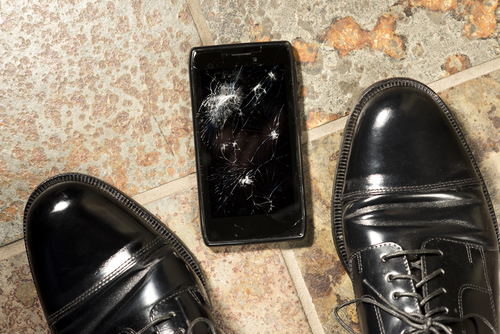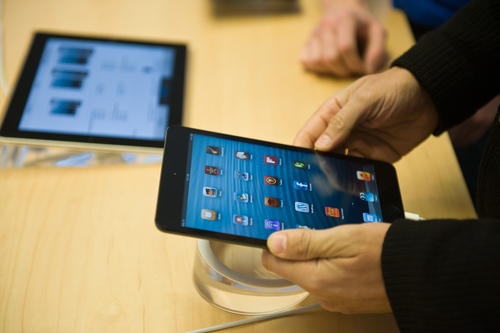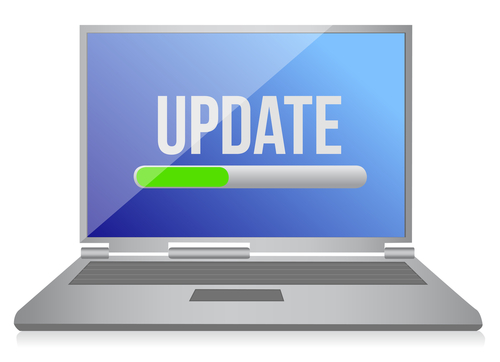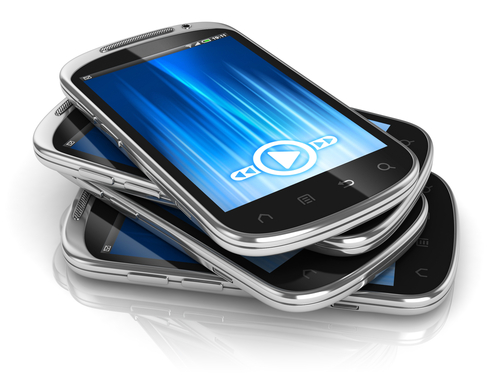March 31st, 2014

Email has become a tool that most of us check and use multiple times per day. Businesses run on email and it’s vital for many users to have constant access and an ability to quickly respond. Accessibility is one of the primary reasons that webmail has surged in popularity. Services like Gmail allow users to have access from virtually anywhere with very little downtime. As Alan Henry of LifeHacker explains, however, there are still some benefits to using desktop email clients like Microsoft Outlook.
While webmail is portable and mobile, it requires an internet connection even to read emails stored in your inbox. While there are fewer and fewer environments where you have to be without an internet connection, there are situations where you’re required to work without one. When that happens, desktop email has the advantage. With a platform like Outlook, you’ll be able to read old messages, organize your inbox and queue up responses to send once a connection is available. This helps you be productive in an otherwise unproductive environment or ensures that an email with valuable information is always available even when your internet connection is having issues.
Have you ever considered what would happen if your email account was suddenly deleted? If most users lose access to their account, they likely lose access to many contacts and vital information. That’s why it’s important to regularly back-up everything stored in your email and back-ups are much easier to create and manage yourself with desktop clients. You’re able to back-up messages stored in your inbox and sent folder, all of your contacts and even your folder structure. This way, if you need to change email provider’s or the unthinkable happens to your account, you’ll have everything you need to pick up where you left off.
To be clear, it’s certainly possible to encrypt webmail, but it usually requires handing at least some control over to a third party app or add-on. For the most secure encryption, you’ll want to store keys and generation tools yourself. To do that, you need a desktop email client. Email is constantly at risk to be hacked or messages intercepted. If you’re sending valuable information via email, you should at least be encrypting it. Effective encryption for desktop mail can be implemented quickly.
There are pros and cons to both webmail and desktop email so you’ll want to carefully diagnose how you regularly use email to help you decide which option is best for you.
Geek Rescue has all the email solutions you need. From hosting email, to setting up your office with Microsoft Exchange, to improving email security and fixing issues, we have the answers you need. Call us at 918-369-4335.
February 5th, 2014

Everyone has dozens of uses for their smartphone and walking around without one is strange. That’s why when your phone breaks, it’s a complete disaster. Thankfully, some hardware repairs aren’t that complicated. Eric Ravenscraft at LifeHacker explained some common repairs that you can perform on your smartphone yourself.
If you take the time to notice, it’s amazing how many people are walking around with cracked and broken screens on their smartphones. The cost and difficult of fixing your screen varies greatly from one device to another. For some phones, the glass is fused with the digitizer, which is how your smartphone interprets you tapping on the screen. If these two components are fused together, repairing and replacing them is much more expensive. Replacing the glass alone is much simpler and much cheaper, but it still requires a nearly complete disassembling of your phone.
Another common problem with smartphones is how easily the headphone jack breaks. Particularly if you use headphones with your phone while you exercise, there’s a good chance your headphone jack will break because there is a lot of stress being placed on the contact points. Replacing the jack itself isn’t overly difficult. The difficult part is getting to the jack. You’ll need to open your device, which ranges from needing to remove a few screws to nearly impossible for devices with unibody constructions.
Much like headphone jacks, buttons on your phone have plenty of stress on them over months of use. Eventually, they get loose or stuck and cease functioning. Again, you’ll need to open your smartphone to get access to broken buttons, which is by far the most difficult part of the repair. Depending on what button is broken, you may not need a hardware fix at all. There are software workarounds that may make that particular button obsolete.
Thankfully, the camera unit in smartphones rarely breaks. But occasionally, if a phone is dropped just right, the lens can crack. In other cases, internal camera sensors can experience problems too. Replacing broken glass may not require removing the entire camera assembly, depending on the device. This makes the repair much easier. For other issues, you’ll need to once again open your phone, then disconnect the a cable from the camera and remove it from the motherboard to replace it.
For any smartphone problem you’re attempting to fix yourself, you’ll need the right set of tools. This includes specialty screwdrivers and a tool to help you pry open the screen. You’ll also need a guide to your specific smartphone that helps you locate the hardware you’re replacing and details how to get to it. Understanding how difficult a smartphone is to repair is good to know before you purchase a new phone, also.
If you’d rather leave it to the professionals, bring your broken smartphone to Geek Rescue or call us at 918-369-4335.
January 27th, 2014

There are still some users who don’t enjoy interacting with Apple’s iOS on their iPhone or iPad. For many of these users, their frustrations stem from not knowing the full capabilities and functionality of the operating system. At LifeHacker, Whitson Gordon has a list of shortcuts that make interacting with iOS more efficient. While some more advanced users will know many of these, there’s something for everyone to learn.
For most users, this has become intuitive. But, some don’t realize that this gesture refreshes in nearly every situation. Pulling your email’s inbox down to check for new messages may be common knowledge, but you can also pull down a webpage to re-load it or pull down an app to refresh the content. Just make sure you pull down until you see an icon, then release to refresh.
- Swipe for timestamps or more options
One common complaint about messaging in iOS is that timestamps aren’t included. Actually, they are but they’re not visible. To see when a message was sent or received, swipe left on the message. Use the same swipe over an email in Mail inbox to see more options, like a quick way to delete.
This is another gesture that works in nearly any situation in iOS. To go back one screen, or even back to the previous webpage, swipe from left to right. If you swipe slowly, you’ll be able to preview the previous screen before you decide to go back. If you swipe the opposite direction in Mail or Safari, you can go forward a screen.
It feels a little cumbersome typing on an iPad’s digital keyboard. There’s a second option that not everyone knows about, however. Hold down the keyboard key, or just simply pull the keyboard apart to get a more comfortable split keyboard. Now, you can type with your thumbs like you do with a smartphone and you can move the keyboard to anywhere on the screen.
- Quick event changes in Calendar
If an event you’ve stored in Calendar needs to be changed, you could edit it and type in the new details. An easier way, however, is to hold down on the event in Day mode, then move the event to a new day or time, or even change the duration.
- Quickly view drafts in Mail
Any saved drafts of messages are available in Mail’s main menu with the rest of the folders, but to reach them quicker, just hold down on ‘Compose’. A list of your drafts will pop up as a menu you can choose from.
These tips allow you to access functions of your Apple device faster and use it more efficiently. If you have other problems with your device, like slow performance, malware infections or broken hardware, come by Geek Rescue or give us a call at 918-369-4335.
January 21st, 2014

When you first unboxed your computer, you probably took extra precautions like being gentle with each piece, washing your hands and keeping food and drinks far away. How long did that last? Most of us abandon the careful behavior and start using our computers with reckless abandon within a few days. Doing so leaves crumbs and debris in keyboards and smudges across our screen. Dirty computers can even perform worse than clean ones. At LifeHacker, Alan Henry published some tips for how to quickly clean your computer every day.
- Turn keyboard upside down and shake over trash.
This isn’t as effective as using a can of compressed air, removing keys and deep cleaning your keyboard. But, these are tips for daily cleaning. By removing any loose particles and crumbs every day, your keyboard stays newer for longer and won’t need to be deep cleaned as often.
- Wipe screen with dual-sided microfiber cloth.
First, wipe down your screen with the terry cloth side. No additional cleaner or liquid is necessary. When you’re finished, turn the cloth over to the microfiber side and wipe again. This will remove smudges and dust that has collected on your screen. This doesn’t help performance, but does allow you to see the best display your monitor allows.
- Wipe keyboard and mouse or trackpad
There are specific cleaning wipes you can buy to remove some dust that doesn’t fall out after step one and remove grime from your trackpad or mouse. Another option is to mix your own cleaning liquid. A mixture of half water and half isopropyl alcohol works well, but don’t use it on your screen.
That’s all there is to it. This will take about one-minute per day and keeps your computer clean without you having to be extra careful. Periodically, you’ll want to perform a deeper clean, which should include cleaning the interior and exterior of your tower. This keeps it running quietly and cooling properly.
If your computer is in need of repairs, or just a deep cleaning, bring it to Geek Rescue or call us at 918-369-4335.
January 13th, 2014

There are few experiences more frustrating than when you can’t connect to the internet or your connection is unbearably slow. Almost everything we do, whether for work or in our free time, requires an internet connection, which makes not having one painful. There are a few tools available to help you diagnose internet connectivity problems, but, as Alan Henry of LifeHacker reports, few are as simple and easy to use as the Connectivity Diagnostics app for Google’s Chrome web browser.
As frustrating as a lack of internet can be, perhaps even worse is not knowing what’s causing your outage. That’s why diagnostic apps like this one are so handy. Whether the issue is with your computer, router, network, or service provider, the Connectivity Diagnostics app finds it so you can fix it.
Unlike other similar applications, the Connectivity Diagnostics app doesn’t require any additional software installed to run. It works through Chrome and is completely free. To find the cause of your internet problems, it can check for an active connection, attempts to contact your DNS server, checks for firewalls blocking your connection or pay-portals, tests for DNS resolution delays and tests for network delays. Each test returns additional information on whether it was successful or not to help you pinpoint the problem.
This isn’t an enterprise level application, but it’s perfect for individual users. Because it’s simple to use, you don’t even need to be tech-savvy to diagnose your connectivity issues.
If your computer is having problems you can’t solve, call Geek Rescue at 918-369-4335.
December 30th, 2013

When shopping for a new computer, there are a lot of factors most users consider. The speed of the processor, the size of the hard drive and the amount of RAM included are common considerations. But, what about the specs of the monitor? A powerful computer is great, but you have to have a monitor that’s right for your uses. Whitson Gordon at LifeHacker recently published a list of things to consider when buying a new computer monitor. The key here is that no monitor is perfect for everyone, but you can find one that’s perfect for you by considering how you’ll be using it most.
For many consumers, the size of their computer monitor is like the size of their television, bigger is better. But, in reality, there is a point when it becomes too big. Consider where your monitor will be and what type of work space you have. Don’t get a monitor too big for the space or you’ll find yourself using it uncomfortably. If you prefer to use more than one monitor at a time, that should weigh on the size of each also. Bigger monitors also demand a higher resolution or you’ll lose image clarity. For example, a 23-inch monitor with a 1080p display looks great, but the same resolution on a 27-inch monitor is noticeably less sharp.
The panel technology your monitor uses is also important to consider. Most LCD monitors will feature twisted nematic panels, or TN panels. They’re cheap and standard and offer some great specs. The refresh rate is high so you’ll enjoy a great experience when gaming or streaming video. The biggest complaint against TN panels is that they don’t offer the most accurate colors and are distorted at certain viewing angles. Vertical Alignment, or VA panels offer the truest blacks and more accurate colors than TN panels, but still suffer from distortion at some angles. In-plane switching panels are the top of the line option. For still images, they’re easily the best choice with accurate colors and wide viewing angles. But, they have a relatively low refresh rate so they’re not for everyone.
This seems like a minor concern until you sit down at your computer in the middle of the afternoon and can’t see what you’re doing. Anti-glare coating reduces glare from light coming from behind you, but it also decreases the quality of the image on your monitor. It becomes a little more dull and fuzzy due to the coating. If you’re planning to keep your monitor away from windows where glare isn’t a issue, you don’t need anti-glare coating. But, in other settings it’s a must and a slightly diminished display just comes with the territory.
The stand that comes with your monitor is another often overlooked feature. A poor quality stand, however, could keep you from adjusting your monitor to a comfortable position. Again, it’s important to think about how you’ll be using your computer. Some stands can only swivel vertically, while others also swivel from side to side. Some even allow you to flip your monitor into portrait mode. Don’t pay for features you won’t use, but be sure to get what you need.
There are plenty more features one could consider before buying a monitor, but by researching these four, you’ll have a good start on finding the best monitor for you.
If you have an existing monitor that just needs some work, bring it to Geek Rescue or call us at 918-369-4335. We fix all types of hardware problems.
December 23rd, 2013

There are millions of Android users worldwide, but there are also plenty of annoyances that come with using an Android phone. Eric Ravenscraft at LifeHacker listed some of the most frustrating Android features and how to fix them.
Your smartphone’s battery dying in the middle of the day isn’t a problem limited to Android users, but it may be the one most complained about. As your phone gets older, the battery life tends to get worse. The obvious solution would be to buy a new smartphone. There are a number of newer options with either larger batteries or more efficient software that extends battery life. Not everyone wants to replace their phone just to get a longer lasting battery, however. And you don’t have to. You could also buy another battery instead. Either a second battery that you keep charged, or a larger capacity battery to replace your existing one. If you’d rather not spend any money, look at removing apps that cause the most drain, or download apps that help you control app’s battery usage. You can also disable bluetooth, GPS and WiFi capabilities when you’re not using them.
The apps and features that manufacturer’s load onto phones before you buy them are rarely useful. They’re referred to as bloatware or crapware by most and usually do nothing but take up space and resources. Unfortunately, you can’t always delete these apps, but you can disable them. Go to the app’s settings and you’ll find a ‘Disable’ button that will keep that app from taking up battery or updating. It will still take up storage space, however.
So many apps are using notifications now that it’s hard to keep up with all of them. If you’re tired of wading through social media, game and email notifications, check for a ‘Notifications’ setting on each app. It may be in the app itself or in the Android app settings. Turning off notifications also reduces battery drain. If you can’t stop the notifications through a settings menu, there’s another way for Android 4.1 and newer users. In your ‘app manager’, uncheck the ‘show notifications’ option and you’re done.
Fixing these annoyances will improve your experience with your Android smartphone. If you have more serious issues, like broken hardware or a malware infection, bring your device to Geek Rescue or call us at 918-369-4335.
December 20th, 2013

The update for Windows 8 has been available for about three months. Some of the new features are obvious, like the re-inclusion of the ‘Start’ button. But, as Ciprian Rusen of LifeHacker writes, there are a few interesting features that aren’t so evident. Not all of these are changes for the better, but all affect the way you’ll use Windows 8.1.
One of the biggest advances within Windows 8.1 is the ability to block the data apps from the Windows Store have access to. You can prevent apps from accessing your name and location. You can also turn off the advertising ID so you don’t get personalized ads using your information. Best of all, you can limit what apps have access to your microphone and webcam.
A virtual private network, or VPN, is a powerful tool for keeping your data safe when surfing the web. It’s particularly useful when you’d otherwise be on an unsecured connection like public WiFi. Windows 8.1 offers better support for VPNs than any previous version of the operating system. There are a number of new customization options when setting up your VPN and even included support for certain providers. Windows will even prompt you to sign into your VPN when an app attempts to access information best accessed over a secure connection.
Part of the updates included with the jump to Windows 8.1 was an update to Internet Explorer that introduces Reading Mode. Load any page with IE 11 and you’ll have a Reading Mode icon in the address bar. Using it will reload the page without distracting elements like ads to allow you to easily read the content you came for.
- No Right-Click From Networks List
In Windows 8, users could right click on a Network and access customization options for that network connection or even use the ‘Forget Network’ option to remove the connection for the list. In Windows 8.1, this capability has been removed. Customization options for network connections haven’t been removed, they’re just more difficult to access.
- SkyDrive Unavailable Offline
SkyDrive and Windows 8.1 have already had their problems, as reported by many users. A planned change with this update was to make SkyDrive documents only available with an internet connection. Files aren’t fully downloaded to your hard drive, so you’re only able to access them from the cloud with an active internet connection. A new column in the SkyDrive folder, called ‘Availability’, tells you if a file is ‘Available offline’ or ‘Online only’. This change is intended to help tablet users and those with very little available hard drive space. For those with more available space that want to avoid this irritation, changing the default to allow all files to be accessible while offline is easy to do through the ‘Settings’ menu.
Whether you’re running the latest version of Windows on a new PC or using an older computer, Geek Rescue has you covered for repairs. Whatever the problem you’re having is, call us at 918-369-4335 and we’ll fix it.
December 4th, 2013

Most people change smartphones every couple of years, if not sooner. For some, the decision on what new phone to get is an easy one. You might be dedicated to iPhones or have a particular Android model that you want to stick with. Others have a more difficult time deciding between the various options available to them. Eric Ravenscraft of Lifehacker wrote an extensive piece about how to choose a new Android smartphone. Here, we’ll look specifically at what features are most important and how to choose the smartphone with the best features for you.
No one carries their smartphone and a digital camera around everywhere they go. Most users want a phone with a quality camera and it’s one of the most varied features from phone to phone. Just because one smartphone’s camera boasts more megapixels doesn’t necessarily mean it’s the best. Each manufacturer uses different tactics and designs to create a better camera. So, do some research and look for comparison tests online that show the type of images a camera will capture and in what settings they’re best used.
Some users will opt for the biggest, brightest and best high-definition display they can find simply because it has the best specs. That isn’t necessarily wrong, but those super charged displays will cost you battery life and processing power and most users can’t tell much of a difference. The big deciding factor for display is between AMOLED or LCD. AMOLED are usually brighter, with more saturated color. They also use less battery because they only light pixels as they’re needed. LCD provide a more realistic color representation. Different displays are best for different users, but don’t rely on number of pixels to choose your next phone.
The amount of time your battery lasts would probably be first in this list for most people. Once again, you can’t judge battery life on one statistic alone. Some manufacturers include larger capacity batteries to power more powerful processors and brighter screens for longer. Others optimize hardware to use less battery. Both are good ways to improve battery life so research is key to picking the right phone. Battery comparisons and tests are available online.
- Manufacturer Specific Features
If you haven’t narrowed down your choices by using the first three features, this one could help you make a final decision. Manufacturer’s like Samsung, HTC and Motorola all put their own spin on what comes with their smartphones. HTC includes a live news feed of your social media profiles on your home screen and a feature to control your television. Motorola phones come with a voice control app. These features probably won’t win you over by themselves, but they could help you decide between your top two options.
When choosing a new smartphone, you don’t need to worry about which phone is the best. You need only worry about which is the best for you. Before you even start researching phones, take a moment to think about how you plan to use it and what you need it for.
If you have issues with a new smartphone, or would like to fix up your current phone to feel like new, bring it in to Geek Rescue or call us at 918-369-4335.
November 25th, 2013

Over time, your PC becomes slower and less efficient. That’s a natural occurrence, but there are steps you can take to keep your PC running better for longer. Of course, there are always options like upgrading hardware. But, as Whitson Gordon explains at Lifehacker, there are some more routine maintenance projects that will also help. The best part is, the suggestions made here are free.
Dirt accumulating inside your PC negatively impacts performance. Your system will likely run slower and tend to overheat. You’ll notice it’s louder too while you’re using it. A can of compressed air is the go to tool for cleaning the inside of your PC. For the outside, like the keyboard, mouse and monitor, consider a Swiffer pad, dust rag or magic eraser. The improvements to the outside are mostly cosmetic, but will make your computer seem newer and nicer.
Over time, your monitor’s colors lose accuracy. You may not even notice while using your computer because it happens so gradually. But, taking the time to correct the problem will make a noticeable difference. Most operating systems come with a monitor calibrating tool. Windows and OS X both have a tool that will make calibrating your monitor quick and easy.
Particularly if you’re using a laptop, it’s much more convenient to use a wireless internet connection, than to be wired directly to your modem. But, there are inherent problems with wireless connections that can get more frustrating over time with older PCs. A wired connection won’t necessarily be faster, but it will be more reliable. With wireless internet, you could experience lag, or frequent disconnects. To get the best internet connection possible, consider going wired.
Sometimes all it takes to improve your PC’s performance is to remove some of the clutter that’s piled up on your hard drive. Chances are, there are quite a few files and applications that you no longer need. Take some time to go through and remove everything you don’t need. You could also take this chance to change where some of your data is stored. Using an external hard drive or the cloud frees up space on your physical hard drive without you having to delete files.
Installing the latest versions of the most popular software can be incredibly expensive. But, those same programs might also be slowing down your computer. That’s because many popular programs include a number of options that you don’t need. Some even include additional applications that you never knew you were getting. There are free alternatives for almost any application. With a little research, you can find a streamlined, free alternative that’s better than what you’re currently using.
These are the most useful tips for improving an aging computer without needing to be an expert. There are certainly other ways to improve your PC like fixing and replacing hardware, but these are usually best left to the professionals. For help getting the most out of any of your devices, call Geek Rescue at 918-369-4335 or bring your machine into one of our locations.




















